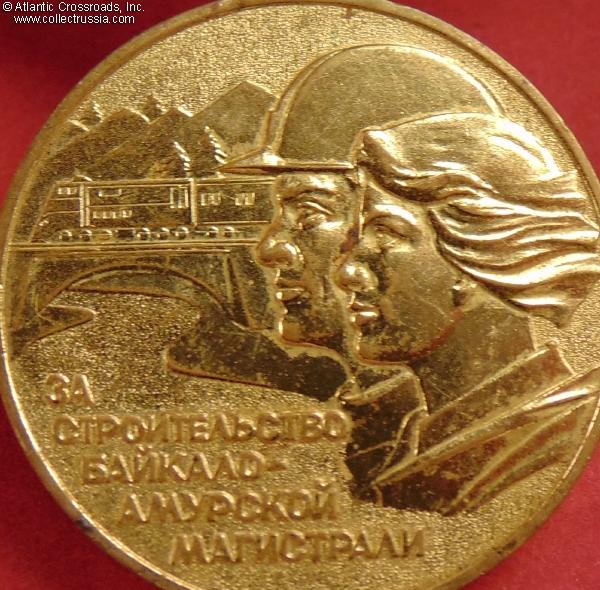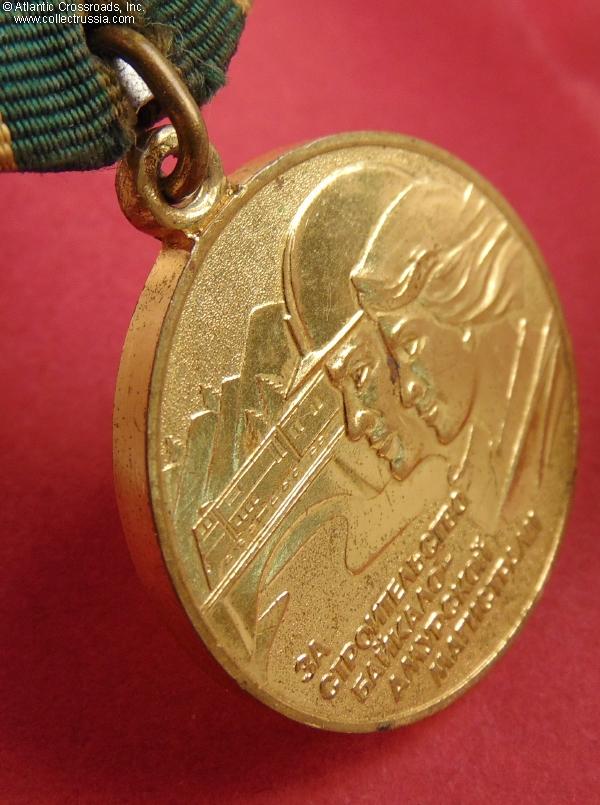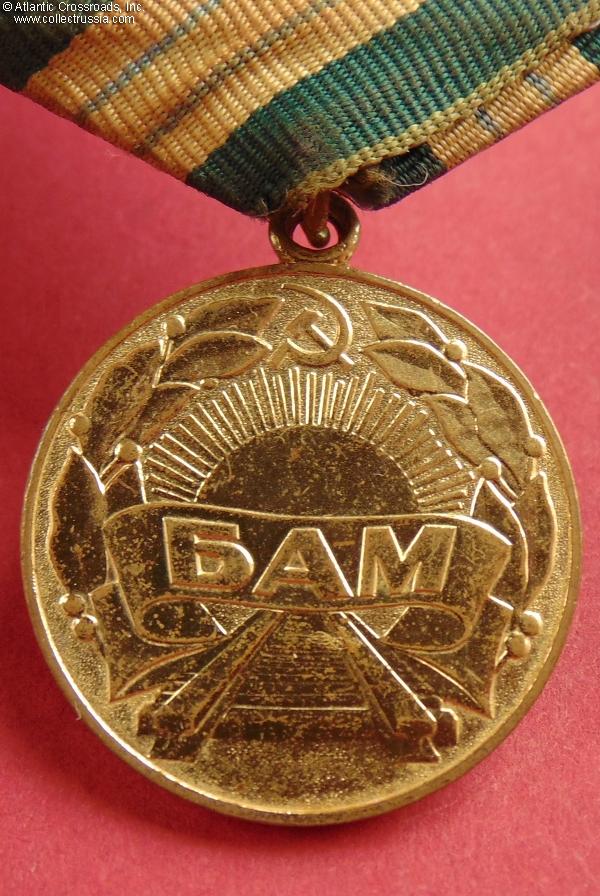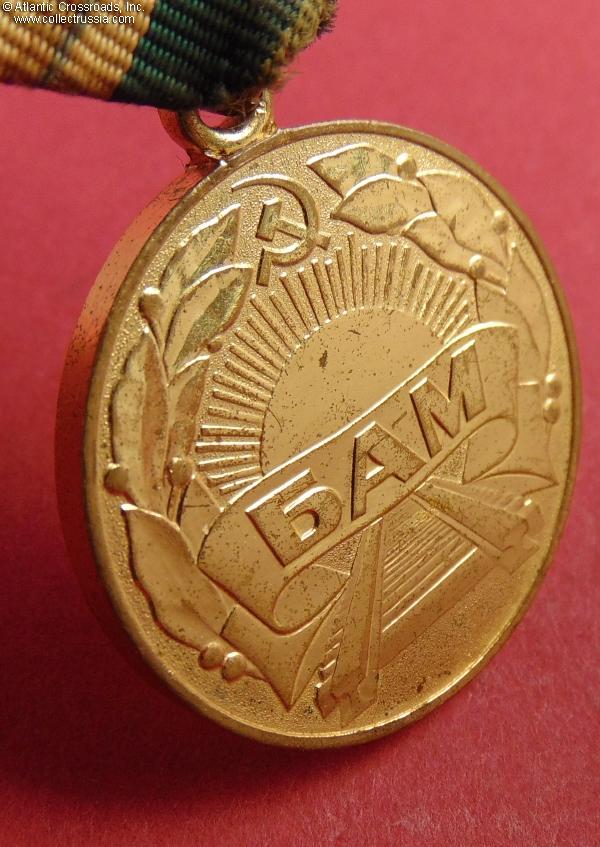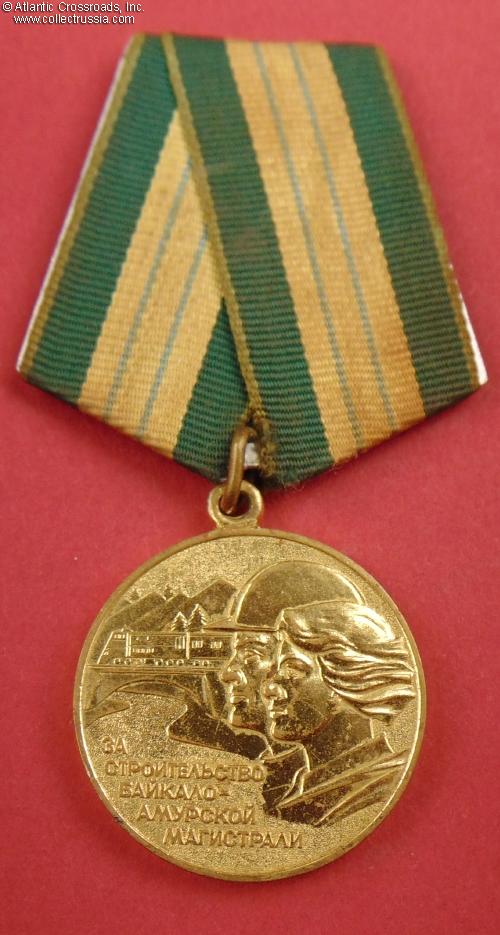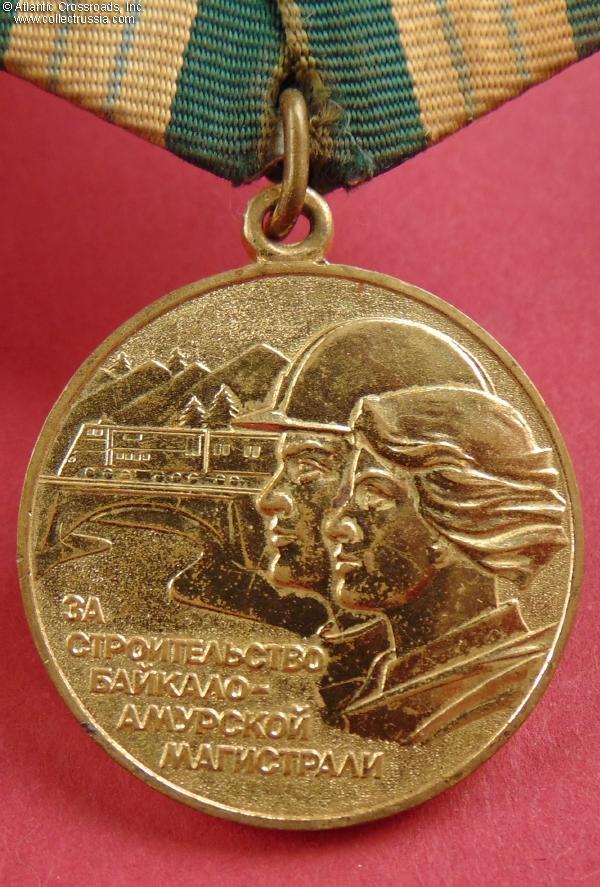
Medal for the Construction of the Baikal-Amur Railroad, 1980s.
In brass; measures 27.0 mm in height incl. eyelet, 32.2 mm wide; weighs 19.5 g without the suspension and connecting link. Variation with a mint-marked eyelet (only the last letter Д of the mint mark ЛМД ["LMD", for Leningrad Mint] struck on the reverse side of the eyelet is visible).
In excellent condition. The details are perfect and extremely crisp on both sides. There are only a few tiny dings to the raised edge that are barely noticeable, no other wear visible to the naked eye. The original "gilt" mint luster (the shiny surface left after the me
In brass; measures 27.0 mm in height incl. eyelet, 32.2 mm wide; weighs 19.5 g without the suspension and connecting link. Variation with a mint-marked eyelet (only the last letter Д of the mint mark ЛМД ["LMD", for Leningrad Mint] struck on the reverse side of the eyelet is visible).
In excellent condition. The details are perfect and extremely crisp on both sides. There are only a few tiny dings to the raised edge that are barely noticeable, no other wear visible to the naked eye. The original "gilt" mint luster (the shiny surface left after the medal was struck at the mint) is very nicely preserved and bright on both sides, free of blemishes or significant tarnish.
The medal comes on an original period aluminum suspension with a nicely preserved ribbon which is probably original to it. The connecting link appears to be of the period as well.
The Medal for the Construction of the Baikal - Amur Railroad is a historically significant award because the railroad provided access to
strategically important natural resources of the Soviet Far East. It was built over many decades starting from the early 1930s. Initially,
the construction was done mostly by slave prison labor but starting from the 60s, it increasingly utilized hired laborers, many of them
seasonal workers such as college students, as well as military construction troops. During the 1960s, the project acquired additional
military importance as Soviet relationship with Communist China deteriorated to the point of military confrontation. The main railroad line,
typically referred to by its acronym BAM, was located far from the Chinese border and unlike the old Trans-Siberian railroad, was therefore
far less vulnerable to a Chinese attack. In 1974, it was declared a "Shock Project of Komsomol (Communist Youth League)", and great
resources were allocated to it eventually making it the most expensive USSR infrastructure project of all time. The main portion of the
railroad was completed in 1984 to great fanfare, but the construction of some of its parts continued for many years afterwards.
$80.00 Add to cart

